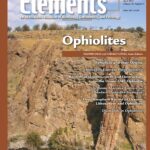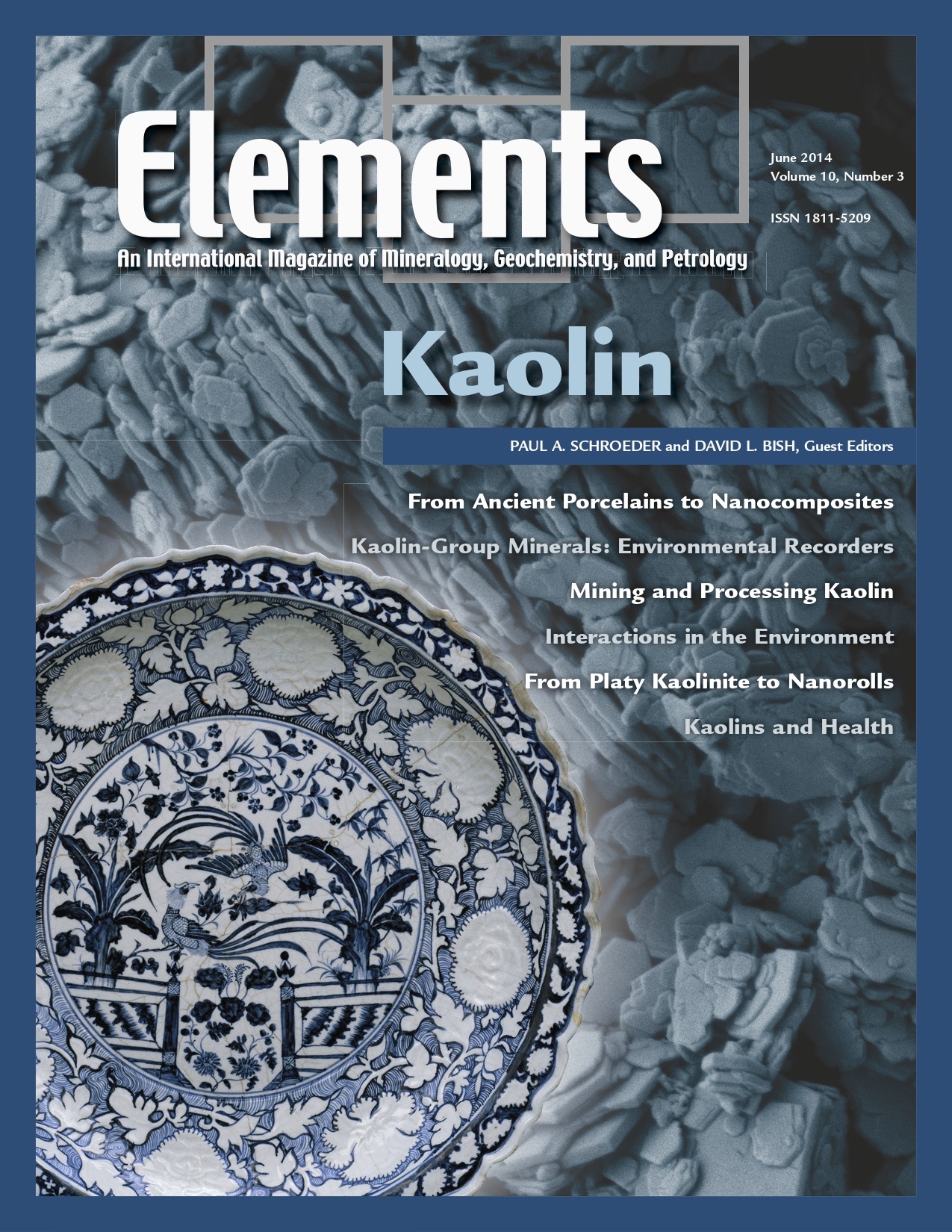
Ophiolites, April 2014, Vol. 10, No. 2
June 28, 2024
Arc Magmatic Tempos, April 2015, Vol. 11, No. 2
June 28, 2024Kaolin, June 2014, Vol. 10, No. 3
$20.00
Although bearing the simple name “kaolin,” this natural material has a variety of geologic origins and many industrial applications significant to society. Known as china clay, kaolin has a long history dating back to Kauling, China, and its first exploitation in the field of ceramics.
Kaolin
June 2014, Vol. 10, No. 3
Although bearing the simple name “kaolin,” this natural material has a variety of geologic origins and many industrial applications significant to society. Known as china clay, kaolin has a long history dating back to Kauling, China, and its first exploitation in the field of ceramics. Kaolin is one of nature’s most abundant nanomaterials. Its fine, clay-sized particles, unique shapes, and layered structures make it central to Earth’s near-surface critical zone. Concerns for energy efficiency and environmental awareness in the industry have led to advances in mining and reclamation practices. The crystallographic and elemental varieties of kaolin require them to be carefully characterized as they lend themselves for use in plastics, papers, pigments, and ceramics. Kaolin minerals are being probed with computational chemistry and new spectroscopic tools to expand their applications and to understand their significance in biology. We are now exploring how kaolin can be nanocomposited to create materials with novel properties.
Why You’ll Love Elements Magazine:
- Expert Contributors: Articles written by renowned researchers in the field of geoscience.
- Engaging Content: Join a community of readers who are passionate about Elements.
- Exceptional Quality: Each issue is printed on high-quality paper with stunning visuals and detailed illustrations that bring complex scientific concepts to life.
Order your copy of the June 2014 issue of Elements magazine today and explore the properties of kaolin.
Related products
-
Glasses And Melts: Linking Geochemistry And Materials Science, October 2006, Vol. 2, No. 5
$20.00Geological interest in studying melts stems from early recognition that melts play a fundamental role in determining the physical and chemical behaviour of magmas and magmatic processes. However, due to the inherent difficulties associated with working at high temperatures, much of the geological research over the last 30 years has used quenched melts or glasses as proxies for melts themselves.
-
Early Earth, August 2006, Vol. 2, No. 4
$20.00The earliest Earth was a strange inhospitable world, yet transitions occurred culminating in the evolution of life within the first billion years. The preservation of a sparse and ambiguous rock record has encouraged debate.
-
Nanogeoscience, December 2008, Vol. 4, No. 6
$20.00At first glance, nano and Earth seem about as far apart as one can imagine. Nanogeoscience seems to be a word connecting opposites.




